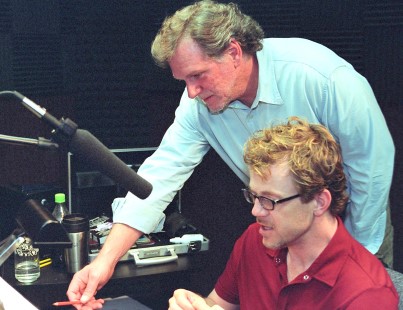 Multi-award winning audiobook narrator Scott Brick (seated) works on a script with Dan Musselman, executive producer at Books On Tape.
Audiobooks: How To Create A Demo
That Shows Off Your Narration Skills
By Scott Brick
Voice Actor
Iím asked constantly how people can get started in the business of audiobook narration Ė so this is it: my advice on how to break into this industry.
The most important thing: just like with any type of voice-over work, youíre going to need a demo to send off to publishers.
For those whoíve never heard of this, a demo is just a short collection of vocal tracks, all dolled up in a pretty package to best convey the idea that YOU are the person who should be reading the next novel by Stephen King or Danielle Steele.
Itís essentially an audition in absentia, and a common tool in the voice-over community. In fact, many - if not most - aspiring VO artists already have one.
A SPECIAL DEMO
Hereís the bad news: even if you already have one, your standard VO demo wonít help you book an audiobook gig. Sorry, it just wonít.
Voice-overs are short form, whereas narrating a book is about the longest form you can get. Youíre going to need an audiobook demo, specifically created to show off those long form skills.
Now you may be in denial, and thinking you might be the exception to the rule, maybe because your VO demo is so freakiní cool that some publisher will just HAVE to listen to it and wonít care that you havenít sent in the appropriate type.
If so, let me tell you: do not hope for this. A friend of mine whoís in a position to cast new readers all the time told me he tosses VO demos right into the trash, unopened.
No matter how cool your standard voice-over demo, it most likely wonít be heard. Trust me: go for the audiobook demo, with a unique audiobook front and back cover.
ARE YOU READY?
You might ask: "But am I ready to make an audiobook demo?Ē
Well, take heart: there are quality classes you can take, instructors whose opinions and guidance will be invaluable to you. I, myself, have jumped into instruction and will be available in the near future, either in LA or via video download.
Your instructor can help you with whatever challenges you face while planning or making your demo. Pick someone youíre comfortable working with, thatís the most important thing. And remember that whomever you want to learn from, even if theyíre on the other side of the country and youíre unable to travel to their class, if you ask nicely they might be willing to do private sessions over the phone, or perhaps even direct you via speakerphone while youíre in the studio laying down tracks.
WHAT TO READ
In creating an audiobook demo, youíll want to choose a minimum of five different genres to read.
Why five? Why not just one or two? Well, thereís a lot of different types of books out there, and you need to show youíre adept at reading as many as possible.
The genre choices are all up to you, though. Including fiction of some sort is an imperative; the vast majority of audiobooks published today are novels, after all, so show them what you can do with one.
Pick a scene with a mixture of both narrative and dialogue so they can hear how you transition between those two types of writing.
SHOW VERSATILITY
Also pick a two-person scene between a man and a woman, for the exact same reason: the first detail any publisher will be paying attention to is how well this particular male narrator does with womenís voices, or female narrator handles males, and can he/she transition smoothly between them?
A smattering of non-fiction is also a good idea: biography, history, current events. Religious or self-help are good ideas, too.
The genres (and sub-genres) to choose from are endless: childrenís, young adult, science fiction, thrillers, romance. Pick a good variety, and make them as different as possible.
PICK FAVORITE BOOKS
Of course, after picking the genres comes the hard part: which books, specifically, should you read from?
This is the part that stumps everyone I know making their demos, the part where most people spend way too much time worrying, but seriously, donít let this throw you.
My advice? Pick your favorite book from each of the genres youíve chosen Ė itíll make a difference.
Anyone whoís ever recorded a voice-over will know that if you smile while you say something in a recording studio, the listener will hear it in your voice.
Well, in the same way, listeners will be able to tell if youíve got a passion for the book youíre reading. It may not be an overwhelming impression, but itíll be there, and in this business, subtlety is a good thing.
HOW LONG?
Next up in your decision-making process comes the length of each track: how many pages should you read, and here thereís no definitive answer. They can be as short as two minutes in length, as long as five or six.
Donít spend too much time deciding this one, just practice reading your scenes out loud and see how long they go; if itís anywhere in the two- to six-minute range, fine; if not, cut.
If you can, pick scenes that have a definite beginning, middle and end, because having some kind of resolution in your scene will definitely help you, as itíll illustrate to potential publishers that you know how to move the story along from start to finish, that you can effectively transition (thereís that word again) between the setup, the delivery, and the payoff.
WHERE TO RECORD ...
Your next concern will be to find a studio.
Many voice-over artists and aspiring narrators have installed their own home setups these days, and if you know anyone with one, my recommendation would be to beg or barter your way into theirs.
If not, then look in your phone book or do a quick Google search and find a local setup.
Itís difficult to nail down prices on this, so I wonít offer any guesses here, because most studios will offer a wide variety of services, some of which are vital, others of which you may not need.
Tell the studio owner what youíre doing and ask what his rates are, then shop around to compare prices. Youíll need him to provide an engineer for the session, and to edit the final product, unless youíre savvy enough to handle that on your own.
You may find, if you live in major markets, that certain studios provide all those services, as well as classes thatíll essentially give you the side benefit of training and direction while you record.
Itís entirely up to you whether or not you feel you need this. Donít be afraid to say no thanks.
READY TO SLATE
When the time comes to actually record your selections, start by slating your name: "Scott Brick Ė audiobook demo.Ē
Remember to make this a separate sound file, not the intro to the first track. People should hear your name, even if they decide to fast-forward to the Romance section. You can be creative here in your title, but donít go overboard.
And when you record your selections, slate each one with the title of the book and the authorís name: "LAKE WOBEGON by Garrison Keillor.Ē Thatís all you need, donít list your name again in the individual genre tracks, itíll sound really repetitive by the time someone has heard it five or six times on the same disc.
PAUSE BETWEEN TRACKS
After youíre done slating your selection, give just a two- to three-second pause before beginning, and leave the same length at the end of the selection to help separate it from the track coming immediately after.
Make sure the engineer/editor youíre working with understands you need this; otherwise, youíll finish on a really dramatic high note Ö and itíll be followed up immediately by you slating the next title: WALTER THE FARTING DOG byÖĒ
It may sound funny here, but you donít want laughs there.
COPYRIGHT WORRIES?
By the way, Iíve been asked repeatedly if there are any copyright issues to worry about, whether itís cool to read from somebody elseís book or if applicants should write something original.
Donít worry about copyright: that only applies if youíre selling this demo, or broadcasting it somewhere, which youíre not. Pick whichever books you want, without worry of prosecution.
NOW HAVE FUN!
You donít have to take this next bit of advice as gospel, but I hope you will: enjoy your time in the studio as much as you can.
Seriously, reading is a fun gig, and you should make the most of it.
You also donít want to sound nervous or distressed. You should sound as though you do this every day, and WILL do it every day when whoever hears this demo and hires you starts giving you work.
TAKE BREAKS
My last bit of advice on the recording process itself: donít read all your selections on the same day. Seriously, if you can avoid it (and afford it), donít. Theyíll sound too similar, and you need them to sound very different, not just in tone but in pacing and energy.
If you can only afford to get into the studio once, if time or money is a concern, then make sure each time you finish a track that you get up and walk around the outside of the building at least once.
Otherwise, your energy will be the exact same on each cut, and publishers will have a hard time distinguishing between them.
CDs AND PACKAGING
Now that youíve got all your selections recorded and arranged in the order you want them, youíre pretty much ready to burn it to a CD.
And yes, CD is the preferred media. The days of cassettes are long past, so donít even think about it. And not everyone will take the time to click on the appropriate link to where your demo is waiting to be downloaded from your web site. Some publishers will, some wonít, but almost all of them will happily accept a CD.
Your packaging is up to you: you can go quick and cheap or intricate and expensive. Thatís whatís known nowadays as branding, and there are some great resources out there to help you in this if you want to put the time, effort and money into it.
At the very least, if youíre going to just do a simple label in a clear plastic CD case, make sure youíve labeled your disc with your name and your contact information.
If you go with a CD case label as well, make sure they BOTH have your contact information. God forbid the disc slips out of the case, the case gets lost, the publisher hears the demo and loves it, wants to hire you on the spot, but oh no, youíd only labeled the case and the disc is blank.
At that point, itís on to the next demo.
GO TO MARKET
Okay, at this point youíre done with your demo, and the question now becomes where to send it?
Your best bet is to get AudioFile Magazineís Audiobook Reference Guide, available from their web site. Itís got the contact information for every publisher of audiobooks out there.
Buy a copy, grab a package of CD mailers from your local office supply store, and start typing up labels. Or word-processing them. Geez, typing Ė talk about dating myself Ö
Good luck! Hearing someone tell me they booked their first job is always the highlight of my day.
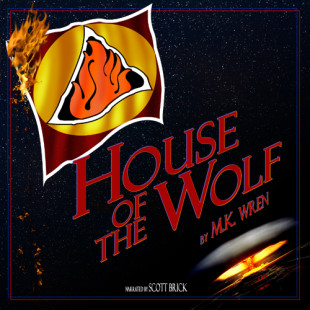 Scott Brick is an actor and writer who ventured into narrating audiobooks in 2000, and as he describes, quickly found himself embraced by the audio world. Heís won more than 40 Earphones Awards for his narrating skills, as well as the 2003 Audie Award for Dune: The Butlerian Jihad. After recording some 250 titles in five years, AudioFile Magazine named Brick "one of the fastest-rising stars in the audiobook galaxy,Ē and proclaimed him a Golden Voice. Having recorded over 400 titles, Brick also sells audiobooks he has narrated at his web site, and soon will offer audiobook narrating instruction. Scott Brick is an actor and writer who ventured into narrating audiobooks in 2000, and as he describes, quickly found himself embraced by the audio world. Heís won more than 40 Earphones Awards for his narrating skills, as well as the 2003 Audie Award for Dune: The Butlerian Jihad. After recording some 250 titles in five years, AudioFile Magazine named Brick "one of the fastest-rising stars in the audiobook galaxy,Ē and proclaimed him a Golden Voice. Having recorded over 400 titles, Brick also sells audiobooks he has narrated at his web site, and soon will offer audiobook narrating instruction.Email: scott@scottbrickpresents.com
ARE YOU MISSING OUT? Get the latest voice-over news, features and resource updates with VoiceOverXtra's Email Feed!
|
|
|
On Michael Langsner's Voice-Over Roadmap Podcast
With Sean Daeley and Paul Stefano - check it out!
Get your bi-weekly dose here ... all things VO!
Inspiring interviews help your VO career
As of the NEW website launch, 03/22/2012

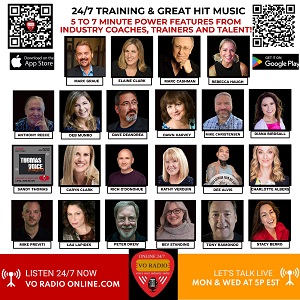
.png)
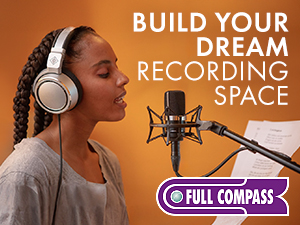
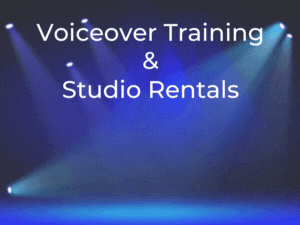

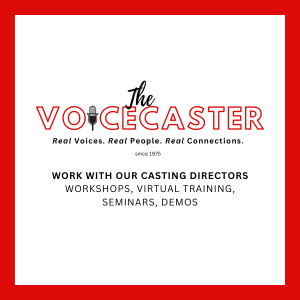


I've narrated 18 audiobooks (and counting) for several different companies and I've never really had the time to make a demo (not a bad problem to have, right?!). Now that I'd like to take my career to the next level of audiobooks, should I approach contacting casting directors and publishing companies the same way and with the same type of demo you mentioned in your article? I've listened to some professional audiobook demos and they seem to be four to five examples of your work, with each roughly 1-2 minutes in length; with the total running time 4-6 minutes. I'm starting to study with the Voice Doctor, Bill Holmes, on Monday night. I figure I'll get some good advice in the workshop, but I wanted your advice first since I started audiobook narration because of your reading of Mordant's Need, Mirror of Her Dreams by Donaldson. Well done my friend. Any advice what-so-ever for the next step in my career would be greatly appreciated. All the best,
-Dan (the VO man)
www.DantheVOman.com
Denise D.
I'll let you know when I get my first gig!
Thanks,
Liz